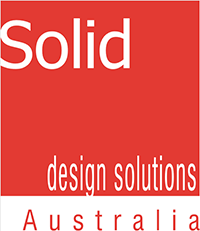CONCEPT PHASE
The phase begins with ensuring that the project team has the correct resources assigned to complete the design and engineering work to be completed in this phase. Our assigned Project Manager will document the detailed work packages by subsystem, and by engineering discipline, to build detailed descriptions of the required work and a schedule for this phase. Changes to the project team will be made as required to align the team resources with the work to be accomplished. A phase kick-off meeting, coordinated by our Project Manager, signals the formal beginning of the phase ensuring that all team members have a full understanding of their responsibilities and of the requirements, schedule, scope and budget of the phase. During the Concept Phase, our Project Manager will work with the Client to clarify and refine design requirements, user experience expectations and market positioning for the new product, which were all documented in the Discovery Phase. This is when the Product Requirements Document (PRD) by subsystem, becomes the revision-controlled document that will guide the entire design and development effort and control scope.
The goals of the Concept Phase are to develop multiple conceptual ideas per subsystem, to create the user experience, meet the requirements for the product, align with the development plan itself and create and refine the look and feel of the product through a structured Industrial Design process. Brainstorming sessions will be held to garner input from designers, engineers and other stakeholder to create multiple conceptual solutions. Each solution is analysed against user expectations, the design objectives and other factors in a methodical manner and then reviewed with your team to produce an optimal conceptual embodiment for the product. To reduce development risk some concepts may be tested during the Concept Phase. These potential ‘proof of concept’ prototype and test efforts are very valuable in refining feature selection, understanding technology challenges within a new design and avoiding problematic design options.

To fully define how the product will meet each unique set of design requirements detailed in the PRD, a highly detailed Design Specification Document (DSD) will be created. This revision controlled DSD will updated throughout the entire product development process to ensure all product requirements and goals are fully met. Solid Design’s user centred approach in this phase creates aesthetically pleasing and functional product features by leveraging formal Industrial Design processes.
As the detailed work tasks are performed our Project Manager will coordinate regular meetings with team members and key Stakeholders and formally report on the status of your program every other week with a written Status Report keeping you informed on progress, spending and issues. Standard deliverables for the Concept Phase often include:
- Conceptual design options by subsystem
- Proof of concept prototypes and testing results
- Industrial Design sketches, rendered images and foam core models
- Product Requirements Document and the Design Specification Document Market assessment of size, entry barriers and positioning options
- Updated and refined branding options
- Updated Risk Assessment with mitigation and response strategies
- Updated design and development process recommendations
- Plan, budget and scope summary for the next phase
Next: Design Phase of Product Design
Solid Design leverages a proven process to bring new ideas to reality. Our process is a phased approach which is shown graphically below, and this will be tailored to fit the requirements specific to your product design, development and testing needs. Simply click on any of the process phases to see a detailed description of the tasks and potential deliverable of that phase.

